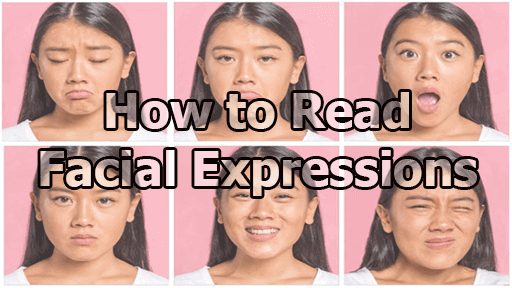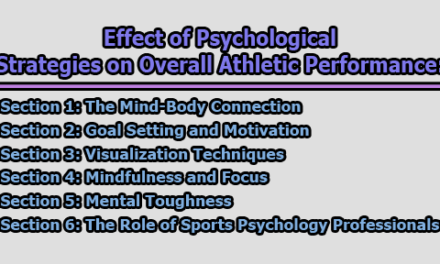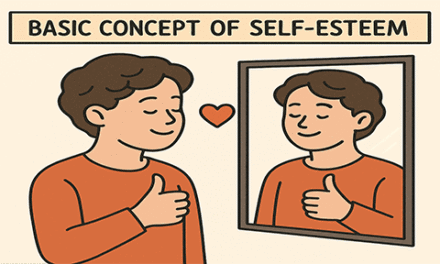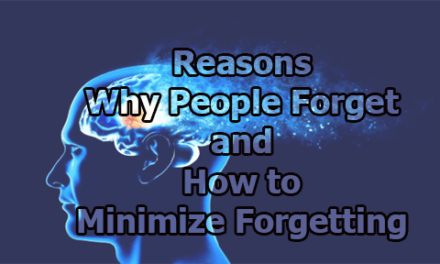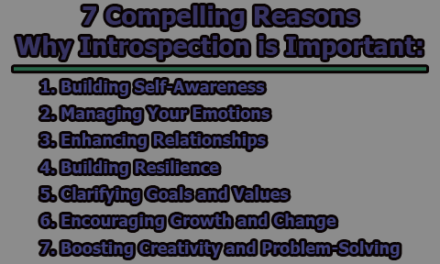How to Read Facial Expressions:
Understanding facial expressions is a vital component of nonverbal communication, offering profound insights into people’s emotions and intentions. By honing the ability to read these expressions, individuals can enhance their social interactions, empathy, and overall communication skills. This article delves into the significance of interpreting facial expressions, explores universal emotions, examines micro-expressions, and provides practical guidance on how to read facial expressions.
The Importance of Interpreting Facial Expressions:
Facial expressions serve as powerful nonverbal cues that convey a wealth of information beyond spoken words. They can reveal genuine feelings, supplement verbal communication, and sometimes even contradict spoken statements. For instance, a person might verbally express contentment while their facial expression indicates discomfort or unease. By accurately interpreting these expressions, one can gain a more comprehensive understanding of others’ emotional states, leading to improved interpersonal relationships and more effective communication.
However, it’s crucial to recognize that while facial expressions can indicate specific emotions, they do not necessarily reveal the underlying causes of those emotions. For example, if someone appears disinterested, it could be due to fatigue, preoccupation, or personal issues unrelated to the immediate interaction. Therefore, while understanding facial expressions is valuable, it should be complemented with contextual awareness and empathetic inquiry.
Universal Facial Expressions:
The study of universal facial expressions explores into the tricky relationship between human emotions and their corresponding facial manifestations. This field examines whether specific facial expressions are innate and universally recognized across diverse cultures or if they are shaped by cultural contexts and social learning. Understanding this dynamic is crucial for insights into human communication, psychology, and the interplay between biology and culture.
Historical Foundations: The exploration of facial expressions dates back to Charles Darwin’s seminal work, “The Expression of the Emotions in Man and Animals,” published in 1872. Darwin proposed that certain facial expressions are innate and serve as universal indicators of specific emotional states. He suggested that these expressions have evolved as adaptive mechanisms, aiding in survival by facilitating non-verbal communication. For example, the expression of fear—characterized by widened eyes and an open mouth—could have evolved to enhance sensory intake and signal danger to others. Darwin’s observations laid the groundwork for subsequent empirical studies in this domain.
Paul Ekman’s Pioneering Research: Building upon Darwin’s theories, psychologist Paul Ekman conducted extensive cross-cultural research in the 1960s and 1970s to investigate the universality of facial expressions. Ekman and his colleagues traveled to various countries, including remote regions with minimal exposure to Western culture, to assess whether people could recognize and interpret specific facial expressions consistently. Their studies identified seven basic emotions—Anger, Contempt, Disgust, Fear, Happiness, Sadness, and Surprise—that were universally recognized through distinct facial expressions. For example, a smile was consistently associated with happiness, while a frown indicated sadness. These findings provided robust evidence supporting the universality hypothesis.
Despite Ekman’s influential work, subsequent research has challenged the notion of universal facial expressions. A study published in the Proceedings of the National Academy of Sciences argued that facial expressions are not universally perceived but are interpreted within cultural contexts. The researchers found that individuals from different cultural backgrounds may interpret the same facial expression differently, suggesting that cultural norms and conceptual frameworks significantly influence emotion recognition.
Additional evidence against universality comes from research indicating that perceptions of emotion depend on cultural and conceptual contexts. This study emphasized that while certain facial movements might be common across cultures, their interpretation can vary significantly, influenced by cultural norms and learned behaviors.
Further studies have expanded upon Ekman’s work, suggesting the existence of additional universal expressions. A 2020 study proposed that there are 16 complex expressions shared universally, including Amusement, Anger, Awe, Concentration, Confusion, Contempt, Contentment, Desire, Disappointment, Doubt, Elation, Interest, Pain, Sadness, Surprise, and Triumph (Cowen et al., 2021).
Cultural Display Rules: One explanation for these cultural variations is the concept of “display rules,” introduced by Ekman. Display rules are culturally specific norms that dictate the appropriate expressions of emotion in various social contexts. For instance, in some cultures, displaying negative emotions in public may be discouraged, leading individuals to mask their true feelings with neutral or positive expressions. Conversely, other cultures might encourage the open display of emotions. These culturally learned behaviors can result in differences in how emotions are expressed and perceived across societies.
Nonverbal Accents: Research has also identified the presence of “nonverbal accents,” subtle variations in facial expressions that reflect an individual’s cultural background. A study published by the Society for Personality and Social Psychology found that people express their emotions with slight differences depending on their cultural identification. These nonverbal accents can influence how expressions are interpreted by others, potentially leading to misunderstandings in cross-cultural interactions.
Evidence from Ancient Artifacts: Adding another dimension to the debate, a study analyzing sculptures from the ancient Americas found that facial expressions depicted in these artworks corresponded with Western expectations for emotions. This suggests that certain expressions have been consistently used to represent specific emotions across different cultures and historical periods, providing some support for the universality hypothesis.
Neurocultural Model of Emotion Expression: To reconcile the evidence supporting both universal and culture-specific aspects of facial expressions, Ekman proposed the neurocultural model of emotion expression. This model posits that while the capacity to express emotions through facial expressions is biologically innate, the way these expressions are managed and displayed is influenced by cultural factors. According to this model, universal facial expressions are generated by innate neural mechanisms, but cultural display rules can modify, suppress, or exaggerate these expressions depending on social context.
Microexpressions: An important aspect of facial expressions is the occurrence of microexpressions—brief, involuntary facial expressions that reveal genuine emotions. These fleeting expressions, lasting only a fraction of a second, can provide insights into a person’s true feelings, especially when they are attempting to conceal or mask their emotions. Ekman’s research into microexpressions has been applied in various fields, including psychology, law enforcement, and security, to improve the detection of deception and understanding of underlying emotions.
Facial Feedback Hypothesis: The facial feedback hypothesis suggests that facial movements can influence emotional experiences. According to this theory, the act of forming a facial expression can trigger the corresponding emotional state. For example, smiling can induce feelings of happiness, while frowning can lead to feelings of sadness. This hypothesis implies a bidirectional relationship between emotions and facial expressions, where not only do emotions influence expressions, but expressions can also modulate emotions.
Applications and Implications: Understanding the universality and cultural specificity of facial expressions has practical implications in various fields:
- Cross-Cultural Communication: Awareness of cultural differences in emotional expression and interpretation can enhance interpersonal interactions in multicultural settings, reducing misunderstandings and promoting empathy.
- Artificial Intelligence and Human-Computer Interaction: Incorporating knowledge of facial expressions into AI systems can improve emotion recognition technologies, making them more sensitive to cultural nuances and individual differences.
- Clinical Psychology: Therapists can benefit from understanding patients’ facial expressions to assess their emotional states more accurately. For individuals with mental health conditions such as autism spectrum disorder (ASD) or social anxiety disorder (SAD), training programs can help them recognize and interpret facial expressions more effectively (Klein & Tamir, 2016).
- Law Enforcement and Security: The ability to detect deception through microexpressions has been employed in forensic psychology and interrogation techniques. Ekman’s research has influenced practices in law enforcement and counterterrorism, helping officers discern when a suspect may be concealing emotions (Ekman & O’Sullivan, 1991).
- Marketing and Consumer Behavior: Understanding how facial expressions correlate with emotions can help businesses gauge consumer reactions to advertisements, product designs, and branding strategies. Companies now use AI-driven facial recognition software to analyze customers’ emotional responses and tailor marketing campaigns accordingly (Lewinski, Fransen, & Tan, 2014).
The Debate on Universality vs. Cultural Relativity: While strong evidence supports the idea that certain facial expressions are biologically hardwired, cultural influences shape how these expressions are displayed and interpreted. Two key schools of thought continue to emerge:
- The Universality Perspective: This view, primarily supported by Ekman and colleagues, suggests that emotions and their corresponding facial expressions are universal across cultures. Neurological studies indicate that the brain regions involved in processing emotions, such as the amygdala, respond similarly to facial expressions of emotion regardless of cultural background (Adolphs et al., 1994).
- The Cultural Relativity Perspective: Researchers in this camp argue that while basic facial expressions may have universal origins, their interpretation is shaped by cultural contexts. A study by Jack et al. (2012) found that individuals from East Asian cultures tend to focus more on the eyes when interpreting emotions, while Westerners rely more on the entire face, particularly the mouth (Jack et al., 2012).
Neuroscientific Insights into Facial Expression Processing: Modern neuroscience has contributed significantly to understanding how the brain processes facial expressions. Functional magnetic resonance imaging (fMRI) and electroencephalography (EEG) studies have identified key brain regions involved in facial expression recognition:
- Amygdala: Plays a crucial role in processing emotions such as fear and anger. Damage to the amygdala impairs the ability to recognize these emotions in facial expressions (Adolphs et al., 1999).
- Fusiform Face Area (FFA): Specialized for facial recognition and processing, this area becomes highly active when viewing human faces (Kanwisher et al., 1997).
- Superior Temporal Sulcus (STS): Involved in perceiving dynamic aspects of facial expressions, such as movement and social cues (Haxby et al., 2000).
These findings suggest that the human brain has specialized neural mechanisms for decoding facial expressions, supporting the idea that recognizing emotions through facial cues is an evolutionary adaptation.
The Role of Facial Expressions in Human Evolution: From an evolutionary perspective, facial expressions likely evolved as a means of nonverbal communication to enhance social bonding and survival. Expressions such as fear and surprise may have helped early humans react quickly to threats, while smiles and other affiliative gestures facilitated group cohesion.
Research on primates and other animals shows that many species exhibit facial expressions similar to those found in humans. For example, chimpanzees display expressions of fear, playfulness, and aggression that closely resemble human expressions (Parr, Waller, & Fugate, 2005). This suggests that the roots of facial expressions extend deep into evolutionary history.
Artificial Intelligence and Facial Expression Recognition: Advancements in AI and machine learning have led to the development of facial expression recognition (FER) systems, which analyze human emotions based on facial cues. These technologies are now used in diverse applications, from mental health diagnostics to security and marketing.
- Emotion AI in Healthcare: AI-powered systems are being used to detect signs of depression, anxiety, and PTSD through subtle facial cues, providing an additional tool for mental health assessments (Gunes & Schuller, 2013).
- Lie Detection and Security: Law enforcement agencies use AI-driven emotion recognition tools to analyze suspects’ microexpressions during interrogations (Bartlett et al., 2014).
- Customer Experience Enhancement: Companies like Amazon and Google are integrating facial recognition into their products to personalize user experiences based on detected emotions (McDuff et al., 2016).
However, ethical concerns regarding privacy and bias in AI-driven facial recognition remain a topic of debate. Studies have shown that some facial recognition systems exhibit racial and gender biases, leading to potential discrimination in real-world applications (Buolamwini & Gebru, 2018).
Identifying Emotions Through Facial Features:
Different facial features play distinct roles in conveying emotions. By focusing on specific areas of the face, one can interpret various emotional signals:
1. Eyebrows (Indicators of Surprise, Fear, and Anger): The position and movement of the eyebrows play a critical role in conveying emotions. Research suggests that eyebrow movements are one of the most reliable indicators of emotional states (Jack et al., 2014).
Raised and Arched Eyebrows → Surprise:
- The eyebrows lift high on the forehead.
- Accompanied by widened eyes and a slightly open mouth.
- This is an instinctive reaction to unexpected stimuli.
Inner Corners of Eyebrows Drawn Up → Sadness:
- The inner parts of the eyebrows rise while the outer edges remain low.
- Often associated with a downward gaze and a frown.
- Studies have shown that this is one of the hardest expressions to fake (Ekman, 1993).
Eyebrows Drawn Together and Lowered → Anger:
- The brows furrow, causing vertical lines to appear between them.
- Often combined with a tightened jaw and narrowed eyes.
- Research using fMRI scans has found that anger expressions activate the amygdala more strongly than other emotions (Whalen et al., 2001).
Slightly Raised One-Sided Eyebrow → Contempt or Doubt:
- One eyebrow is lifted while the other remains neutral.
- This asymmetrical expression signals skepticism or disdain.
- Contempt is often considered a moral emotion, indicating judgment or superiority (Gottman & Levenson, 1992).
2. Eyes (The “Windows to the Soul”): The eyes provide crucial emotional cues, often being the most expressive part of the face. Eye-tracking studies have confirmed that people tend to focus on the eyes when reading emotions (Schurgin et al., 2014).
Widened Eyes with Dilated Pupils → Fear or Surprise:
- The eyes open wider to increase visual intake in response to danger or shock.
- This reaction is linked to the brain’s fight-or-flight response (LeDoux, 2000).
Rapid Blinking → Discomfort or Anxiety:
- Increased blinking rate has been associated with deception and nervousness.
- Liars often blink more frequently after telling a lie, as a response to cognitive load (Vrij et al., 2008).
Narrowed Eyes with Furrowed Brows → Anger or Suspicion:
- The eyes appear smaller as the surrounding muscles tighten.
- This is an evolutionary response to focus attention on a perceived threat (Darwin, 1872).
Eyes Averted or Avoiding Contact → Guilt, Embarrassment, or Dishonesty:
- People tend to look away when feeling ashamed or when hiding something.
- However, cultural differences exist: in some societies, direct eye contact is considered disrespectful rather than a sign of dishonesty (Argyle & Cook, 1976).
3. Mouth (Smiles, Frowns, and Deception Cues): The mouth is another vital component of facial expression analysis. While smiles are typically associated with happiness, their subtle variations can indicate different emotions.
Genuine (Duchenne) Smile → Happiness:
- Involves both the mouth and the eyes (crinkling at the corners).
- Controlled by the zygomatic major and orbicularis oculi muscles.
- Research shows that people are better at recognizing genuine smiles than fake ones (Ekman & Davidson, 1993).
Tight-Lipped Smile → Concealment of Emotion:
- The lips are stretched but remain closed.
- Often used in social situations to mask negative emotions (Niedenthal et al., 2010).
Lip Biting → Anxiety or Uncertainty:
- A self-soothing behavior often observed in stressful situations.
Lower Lip Jut Forward → Pouting or Sadness:
- Common in both adults and infants as an expression of disappointment or frustration.
One-Sided Mouth Raise → Contempt or Smugness:
- An asymmetrical mouth movement is a classic indicator of contempt.
Mouth Covered by a Hand → Deception or Shock:
- This gesture is often seen in people who are suppressing a reaction or concealing information (Porter & ten Brinke, 2008).
Challenges in Reading Facial Expressions:
The ability to accurately interpret facial expressions is a crucial skill for social interactions, emotional intelligence, and effective communication. However, reading facial expressions is not always straightforward. Many factors influence our ability to correctly decode emotions, including cultural differences, individual variability, deception, and neurodivergence. Additionally, situational and contextual factors can alter the meaning of facial expressions, making interpretation even more complex.
1. Cultural Differences in Facial Expression Interpretation: While some facial expressions are considered universal, cultural influences shape how emotions are expressed and interpreted. According to Paul Ekman’s research on universal facial expressions, emotions such as happiness, anger, sadness, and fear are recognized across all human cultures (Ekman & Friesen, 1971). However, cultural norms and display rules influence how and when these emotions are expressed.
1.1 Cultural Display Rules: Cultural display rules dictate which emotions can be shown in specific social settings. These norms vary widely across societies (Matsumoto et al., 2008):
Western Cultures (Individualistic Societies, e.g., U.S., Canada, Western Europe):
- More expressive facial emotions are encouraged.
- Smiling is used frequently as a social tool to convey friendliness and openness.
Eastern Cultures (Collectivistic Societies, e.g., Japan, China, South Korea):
- Emotional restraint is valued in social settings.
- Negative emotions, such as anger or sadness, are often suppressed in public.
- People may use a “neutral face” to mask emotions, making it harder to interpret true feelings.
For instance, a study by Yuki, Maddux, and Masuda (2007) found that Americans focus more on the mouth when interpreting emotions, whereas Japanese individuals rely more on the eyes (Yuki et al., 2007). This suggests that facial cue interpretation is influenced by cultural conditioning.
1.2. Cultural Variability in Specific Expressions:
Smiling as a Sign of Happiness or Nervousness:
- In Western cultures, a smile typically signals happiness.
- In some East Asian cultures, a smile may be used to cover up discomfort, embarrassment, or even sadness (Matsumoto & Hwang, 2012).
Direct Eye Contact and Respect:
- In the U.S. and many Western societies, maintaining eye contact signals confidence and honesty.
- In cultures such as Japan and some Middle Eastern countries, direct eye contact can be perceived as aggressive or disrespectful (Argyle & Cook, 1976).
2. The Role of Individual Differences in Emotion Recognition: People vary in their ability to read facial expressions based on psychological traits, personality differences, and past experiences.
2.1. Gender Differences: Studies suggest that women tend to be better at recognizing facial expressions than men. Hall & Matsumoto (2004) found that women have higher accuracy in decoding emotional expressions, particularly for sadness, fear, and happiness (Hall & Matsumoto, 2004).
Possible reasons for this gender difference:
- Evolutionary Perspective: Women may have evolved to be more attuned to facial expressions due to their traditional caregiving roles.
- Socialization: Girls are often encouraged to be more emotionally expressive and aware of others’ feelings.
2.2. Personality Traits and Emotional Intelligence:
- Empathic individuals are generally better at interpreting facial expressions (Davis, 1983).
- People with high emotional intelligence (EQ) can read emotions more accurately and respond appropriately (Mayer et al., 1999).
- Introverts vs. Extroverts: Extroverts may be more expressive but not necessarily better at reading emotions than introverts (Akert & Panter, 1988).
2.3. Effects of Past Trauma and Emotional Bias: Past experiences shape how we interpret facial expressions. People with a history of trauma or abuse may be hypersensitive to negative expressions, often perceiving neutral faces as threatening (Pollak et al., 2000).
- Post-Traumatic Stress Disorder (PTSD): Individuals with PTSD show heightened sensitivity to angry or fearful faces (Fani et al., 2012).
- Depression and Anxiety Disorders: People with depression often misinterpret neutral or happy faces as sad or disapproving (Bouhuys et al., 1999).
3. Deception and Micro-Expressions: Deceptive individuals often try to conceal their true emotions, making facial expression analysis more difficult. However, micro-expressions—brief, involuntary facial expressions lasting less than half a second—can reveal hidden emotions (Ekman, 2003).
3.1. Challenges in Detecting Deception:
- Masked Expressions: A person may consciously suppress an emotion, replacing it with a neutral or fake expression.
- Conflicting Cues: Verbal statements and facial expressions may not match (e.g., saying “I’m fine” while displaying distress).
- Micro-expressions are Hard to Notice: Since they occur so quickly, most people do not naturally detect them without training (Yan et al., 2013).
Despite these challenges, micro-expression training tools have been developed to improve lie detection and emotional recognition skills (Matsumoto & Hwang, 2011).
4. Neurological and Psychological Conditions Affecting Facial Expression Recognition: Certain neurological and psychological conditions impair an individual’s ability to interpret facial expressions accurately.
4.1. Autism Spectrum Disorder (ASD):
- People with ASD often struggle to recognize emotional cues in facial expressions (Harms et al., 2010).
- Studies show that individuals with autism may focus on the mouth rather than the eyes, which reduces accuracy in recognizing emotions like fear or sadness.
4.2. Prosopagnosia (Face Blindness):
- A neurological disorder that affects facial recognition.
- People with prosopagnosia may struggle to recognize both identities and emotional expressions (Duchaine & Nakayama, 2006).
4.3. Social Anxiety Disorder (SAD): Individuals with SAD often misinterpret facial expressions, perceiving neutral faces as threatening (Mogg et al., 2004).
Improving the Ability to Read Facial Expressions:
While some individuals have a natural ability to decode facial expressions, others may struggle, particularly those with social anxiety disorder (SAD) or autism spectrum disorder (ASD) (Klin et al., 2002). Fortunately, research suggests that with proper training and practice, one can significantly enhance their ability to read facial expressions.
1. Practicing with Universal Facial Expressions: Since research confirms the existence of universal facial expressions of emotions (anger, contempt, disgust, fear, happiness, sadness, and surprise), becoming familiar with these expressions is a fundamental step (Ekman & Friesen, 1971).
- Practice Identifying Emotions in Photos: Studies suggest that repeatedly viewing images of facial expressions while identifying emotions can enhance recognition accuracy. Training programs using standardized databases such as the Facial Action Coding System (FACS) and the Pictures of Facial Affect database have been shown to improve emotion perception skills (Ekman & Rosenberg, 2005).
- Use Emotion Mimicry Exercises: Research indicates that mimicking facial expressions can help individuals internalize and recognize emotions more effectively (Wood et al., 2016).
2. Enhancing Awareness of Microexpressions: Microexpressions are brief, involuntary facial expressions that reveal genuine emotions, often lasting less than half a second (Yan et al., 2013). Since these expressions occur so quickly, training the brain to detect them requires deliberate practice.
- Engage in Microexpression Training Tools: Studies have shown that specialized training programs, such as the Microexpression Training Tool (METT) and Subtle Expression Training Tool (SETT), significantly improve the ability to detect fleeting emotions (Matsumoto & Hwang, 2011).
- Slow Down Video Footage: Watching slow-motion recordings of facial expressions can help individuals recognize the subtle cues associated with microexpressions.
3. Improving Eye Contact and Attention to Facial Cues: Eye movements play a crucial role in facial expression recognition. Studies using eye-tracking technology have found that trained individuals tend to scan key areas of the face—particularly the eyes and mouth—more effectively than untrained individuals (Schurgin et al., 2014).
- Practice Focusing on Different Facial Features: Research suggests that systematically observing different facial areas, such as the eyebrows, eyes, and mouth, enhances overall emotion recognition (Jack et al., 2014).
- Develop Active Listening Skills: Combining facial expression analysis with active listening can improve accuracy in emotional interpretation, as emotions are often conveyed through a combination of verbal and nonverbal cues (Mehrabian, 1972).
4. Contextualizing Facial Expressions: Although facial expressions convey emotions, they should always be interpreted in the appropriate context. Situational factors, cultural norms, and individual personality traits influence how emotions are expressed and perceived.
- Study Cultural Differences: Research shows that Eastern and Western cultures emphasize different facial areas when interpreting emotions; Westerners focus more on the mouth, while Easterners rely more on the eyes (Jack et al., 2009).
- Consider Body Language and Speech Patterns: Combining facial expression analysis with body language and tone of voice enhances emotional accuracy (Argyle, 1975).
5. Using Artificial Intelligence for Training: Recent advancements in artificial intelligence (AI) have led to the development of facial expression recognition (FER) software. AI-based tools can provide real-time feedback on facial expressions, allowing individuals to refine their ability to detect emotions.
- AI-Based Emotion Recognition Tools: Programs such as Affectiva and Microsoft’s Emotion API analyze facial expressions and provide feedback on emotional accuracy (McDuff et al., 2016).
- Virtual Reality (VR) Simulations: VR environments have been developed to help individuals with social communication difficulties practice facial expression recognition in realistic scenarios (Bailenson et al., 2006).
It is apparent that understanding and interpreting facial expressions is a fundamental aspect of effective communication. By recognizing universal expressions, being aware of micro-expressions, and considering cultural and individual differences, individuals can enhance their social interactions and build stronger interpersonal relationships.
References:
- Akert, R. M., & Panter, A. T. (1988). Extraversion and the ability to decode nonverbal communication. Journal of Personality and Social Psychology, 54(6), 975-983. https://doi.org/10.1016/0191-8869(88)90130-4
- Argyle, M., & Cook, M. (1976). Gaze and mutual gaze. Cambridge University Press. http://www.jstor.org/stable/27847843
- Biehl, M., Matsumoto, D. & Ekman, P. (1997). Matsumoto and Ekman’s Japanese and Caucasian facial expressions of emotion (Jacfee): Reliability data and cross-national differences. J Nonverbal Behav, 21(1):3-21. https://doi.org/10.1023/A:1024902500935
- Bouhuys, A. L., Bloem, G. M., & Groothuis, T. G. (1999). Induction of depressed and elated mood by music influences the perception of facial emotional expressions in healthy subjects. Behaviour Research and Therapy, 37(9), 879-887. https://doi.org/10.1016/0165-0327(94)00092-n
- Claudino, RG. e., de Lima LKS., de Assis EDB., & Torro N. (2019). Facial expressions and eye tracking in individuals with social anxiety disorder: A systematic review. Psicol-Reflex Crit. 32(1):9. https://doi.org/10.1186/s41155-019-0121-8
- Cowen, A.S., Keltner, D., Schroff, F., Jou, B., Adam, H., & Prasad, G. (2021). Sixteen facial expressions occur in similar contexts worldwide. Nature. 589(7841):251-257. https://doi.org/10.1038/s41586-020-3037-7
- Davis, M. H. (1983). Measuring individual differences in empathy: Evidence for a multidimensional approach. Journal of Personality and Social Psychology, 44(1), 113-126. https://doi.org/10.1037/0022-3514.44.1.113
- D’agostino, T. A., & Bylund, C. L. (2014). Nonverbal accommodation in health care communication. Health Commun. 29(6):563-73. https://doi.org/10.1080/10410236.2013.783773
- Duchaine, B., & Nakayama, K. (2006). Developmental prosopagnosia: A window to content-specific face processing. Trends in Cognitive Sciences, 10(5), 207-216. https://doi.org/10.1016/j.conb.2006.03.003
- Eisenbarth, H., & Alpers, G.W. (2011). Happy mouth and sad eyes: Scanning emotional facial expressions. Emotion, 11(4):860-865. https://doi.org/10.1037/a0022758
- Ekman, P., & Friesen, W. V. (1971). Constants across cultures in the face and emotion. Journal of Personality and Social Psychology, 17(2), 124-129. https://doi.org/10.1037/h0030377
- Ekman, P. (2003). Emotions revealed: Recognizing faces and feelings to improve communication and emotional life. Holt Paperbacks. https://www.scirp.org/reference/referencespapers?referenceid=1408954
- Fani, N., Tone, E. B., Phifer, J., Norrholm, S. D., Bradley, B., Ressler, K. J., & Jovanovic, T. (2012). Attention bias toward threat is associated with exaggerated fear expression and impaired extinction in PTSD. Psychological Medicine, 42(3), 533-543. https://doi.org/10.1017/S0033291711001565
- Hall, J. A., & Matsumoto, D. (2004). Gender differences in judgments of multiple emotions from facial expressions. Emotion, 4(2), 201-206. https://doi.org/10.1037/1528-3542.4.2.201
- Harms, M. B., Martin, A., & Wallace, G. L. (2010). Facial emotion recognition in autism spectrum disorders: A review of behavioral and neuroimaging studies. Neuropsychology Review, 20(3), 290-322. https://doi.org/10.1007/s11065-010-9138-6
- Hurley, C. M., Anker, A. E., Frank, M. G., Matsumoto, D., & Hwang, H. C. (2014). Background factors predicting accuracy and improvement in microexpression recognition. Motiv Emot. 38(5):700-714. https://doi.org/10.1007/s11031-014-9410-9
- Iwasaki, M., & Noguchi, Y. (2016). Hiding true emotions: Micro-expressions in eyes retrospectively concealed by mouth movements. Sci Rep. 6(1):22049. https://doi.org/10.1038/srep22049
- Jiang, J., Borowiak, K., Tudge, L., Otto, C., & Von Kriegstein K. (2017). Neural mechanisms of eye contact when listening to another person talking. Soc Cogn Affect Neurosci. 12(2):319-328. https://doi.org/10.1093/scan/nsw127
- Matsumoto, D., & Hwang, H. S. (2011). Judgments of facial expressions of emotion in profile. Emotion, 11(5), 1223–1229. https://doi.org/10.1037/a0024356
- Matsumoto, D., & Hwang, H. C. (2012). Culture and Emotion: The Integration of Biological and Cultural Contributions. Journal of Nonverbal Behavior, 36(1), 1-27. https://doi.org/10.1177/0022022111420147
- Matsumoto, D., Yoo, S. H., & Fontaine, J. (2008). Mapping expressive differences around the world: The relationship between emotional display rules and individualism vs. collectivism. Journal of Cross-Cultural Psychology, 39(1), 55-74. https://doi.org/10.1177/0022022107311854
- Matsumoto, D., & Hwang, H. C. (2018). Microexpressions differentiate truths from lies about future malicious intent. Front Psychol. 9. https://doi.org/10.3389/fpsyg.2018.02545
- Mayer, J. D., Salovey, P., & Caruso, D. R. (1999). Emotional intelligence meets traditional standards for an intelligence. Intelligence, 27(4), 267-298. https://doi.org/10.1016/S0160-2896(99)00016-1
- Mogg, K., Philippot, P., & Bradley, B. P. (2004). Selective attention to angry faces in clinical social phobia. Journal of Abnormal Psychology, 113(1), 160-165. https://doi.org/10.1037/0021-843X.113.1.160
- Neely, J. G., Lisker, P., Drapekin, J. (2014). Importance of the brow in facial expressiveness during human communication. Otol Neurotol. 35(3):e97-e103. https://doi.org/10.1097/MAO.0b013e3182a006cd
- Pollak, S. D., Cicchetti, D., Hornung, K., & Reed, A. (2000). Recognizing emotion in faces: Developmental effects of child maltreatment. Developmental Psychology, 36(5), 679-688. https://doi.org/10.1037/0012-1649.36.5.679
- Perelman, B. S. (2014). Detecting deception via eyeblink frequency modulation. PeerJ. 2:e260. https://doi.org/10.7717/peerj.260
- Yan, W.-J., Wu, Q., Liang, J., Chen, Y.-H., & Fu, X. (2013). How fast are the leaked facial expressions: The duration of micro-expressions. Journal of Nonverbal Behavior, 37(4), 217-230. https://doi.org/10.1007/s10919-013-0159-8
- Yuki, M., Maddux, W. W., & Masuda, T. (2007). Are the windows to the soul the same in the East and West? Cultural differences in using the eyes and mouth as cues to recognize emotions in Japan and the United States. Journal of Experimental Social Psychology, 43(2), 303-311. https://doi.org/10.1016/j.jesp.2006.02.004

Library Lecturer at Nurul Amin Degree College

